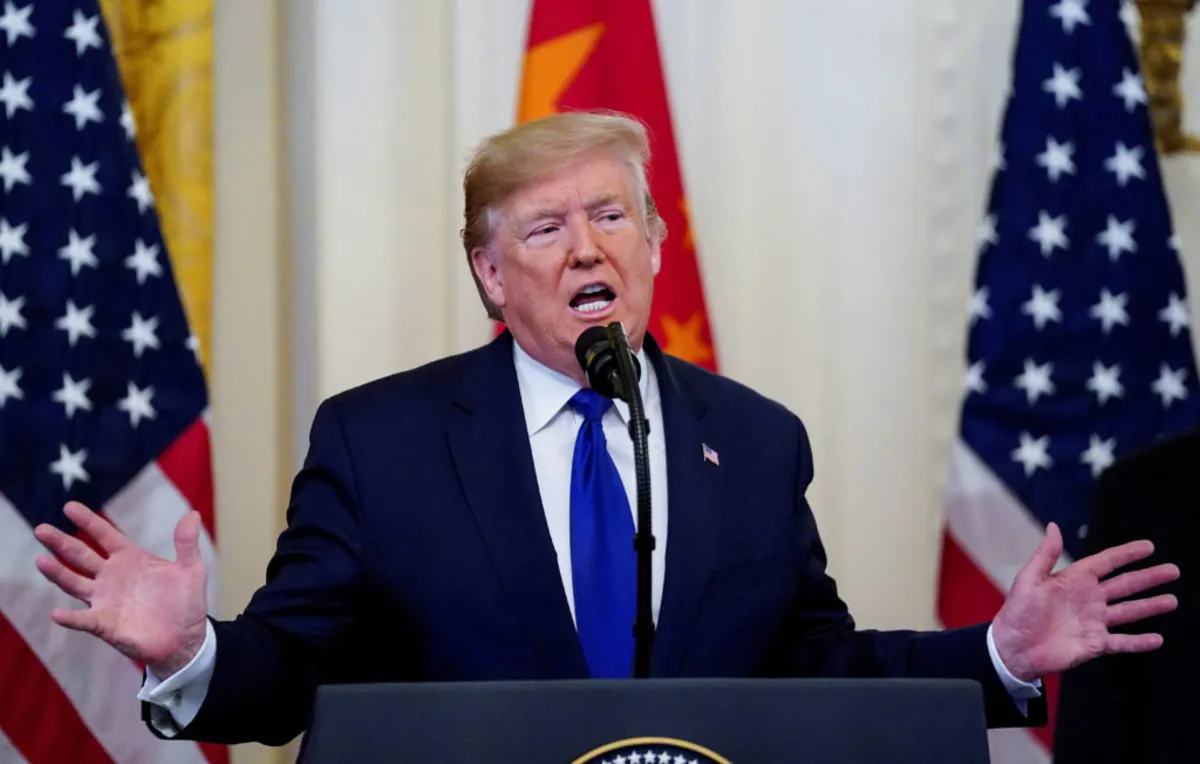
In a significant move for the global economy, President Donald Trump announced on Wednesday that China will facilitate easier access for American industries to critical magnets and rare earth minerals. This decision paves the way for ongoing discussions between the world's two largest economies. In exchange, Trump stated that the U.S. would halt efforts to revoke the visas of Chinese nationals studying at U.S. colleges. His remarks were made via social media following two days of high-level trade negotiations in London.
While Trump's announcement suggests a breakthrough, the specifics of what concessions the U.S. has made remain vague. Beijing has yet to confirm the details of the negotiations, and both Chinese President Xi Jinping and Trump have not signed off on any formal agreement. What Trump described as a “deal” is more accurately a “framework” intended to set the stage for further discussions. His comments have also led to confusion regarding the status of tariffs on Chinese imports, creating uncertainty surrounding more than $660 billion in annual trade between the two nations.
On social media, Trump claimed, “WE ARE GETTING A TOTAL OF 55% TARIFFS, CHINA IS GETTING 10%. RELATIONSHIP IS EXCELLENT!” However, a White House official, who requested anonymity, clarified that the 55% figure does not represent an increase on the previous 30% tariff on China. Instead, Trump included pre-existing tariffs imposed during his first term. This discrepancy has raised concerns among business leaders, such as Rick Woldenberg, CEO of Learning Resources, who is involved in legal action challenging Trump's tariff authority.
In a follow-up social media post, Trump emphasized his commitment to working closely with Xi to bolster American trade with China, calling it a potential “WIN for both countries.” The framework emerged late Tuesday after intense negotiations in London, where U.S. Treasury Secretary Scott Bessent, Commerce Secretary Howard Lutnick, and U.S. Trade Representative Jamieson Greer engaged with Chinese Vice Premier He Lifeng.
Since resuming his presidency in January, Trump has aggressively leveraged tariffs as a tool for raising revenue, protecting American industries, and compelling other nations to comply with U.S. demands. He has applied baseline 10% tariffs on imports from nearly every country, significantly affecting American manufacturers and construction companies that rely on imported metals. For instance, his recent decision to double steel and aluminum tariffs to 50% has raised costs for U.S. industries.
Trump's approach to China has been particularly erratic. After initially imposing a 20% tariff on Chinese goods, he escalated it to 54% to counter perceived unfair practices, leading to retaliatory tariffs from China. This tit-for-tat sparked fears of a complete trade breakdown and significant market volatility. Following a meeting in Geneva last month, both countries agreed to reduce tariffs, with the U.S. returning to a 30% rate and China to 10%.
In April, China introduced licensing requirements that delayed shipments of essential rare earth minerals to the U.S., prompting Trump to threaten to terminate the Geneva agreement. However, recent discussions in London resulted in China agreeing to expedite rare earth shipments. This agreement comes amid reports from an international rights group indicating that several global brands may be inadvertently complicit in forced labor practices through their Chinese supply chains, particularly concerning minerals sourced from the Xinjiang region.
Despite the apparent progress, analysts have expressed skepticism about the outcomes of the London meeting. Dan Kritenbrink, former assistant secretary of state for East Asian and Pacific Affairs, described the meeting as producing a “fragile truce.” He noted that both sides have demonstrated their leverage and tools to inflict damage on one another. The potential for a supply chain war raises concerns not only for the U.S. and Chinese economies but for the global economy as a whole.
Danny Russel, vice president for international security and diplomacy at the Asia Society Policy Institute, remarked that Trump's latest pressure campaign appears to be concluding without significant gains. In exchange for concessions from China, the U.S. has merely secured a promise for expedited delivery of critical minerals, leaving many to question the effectiveness of the ongoing trade negotiations. Veronique de Rugy, a senior research fellow at George Mason University, dismissed the London truce as a “handshake deal,” emphasizing the volatility and unpredictability that could alter the agreement at any moment.